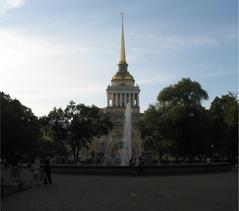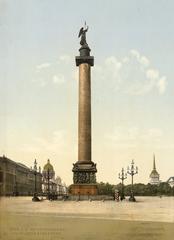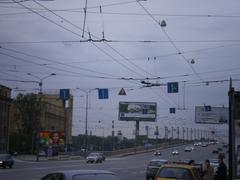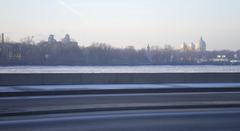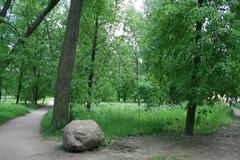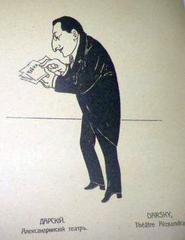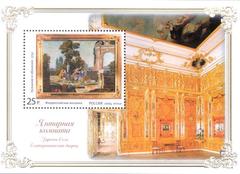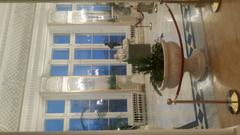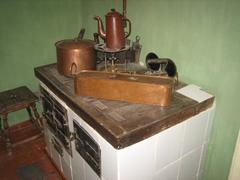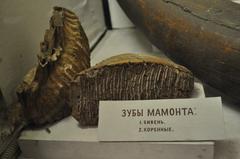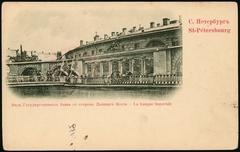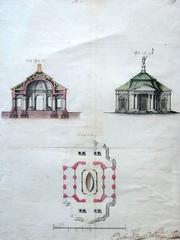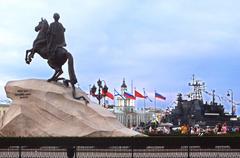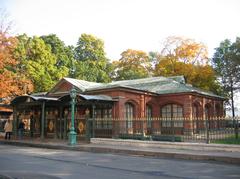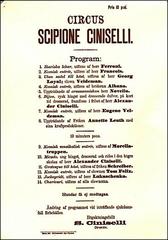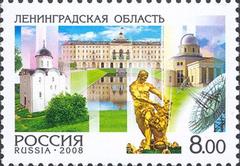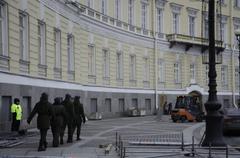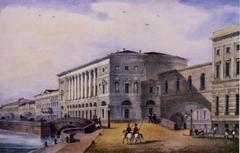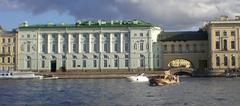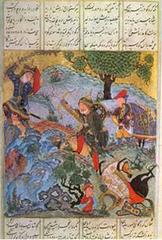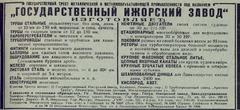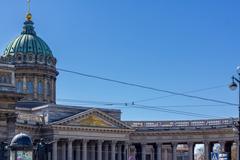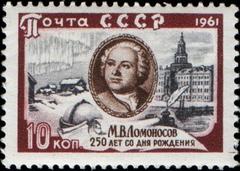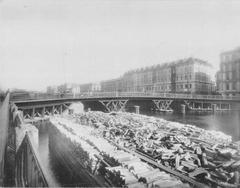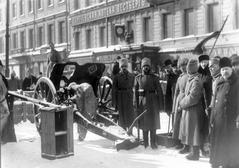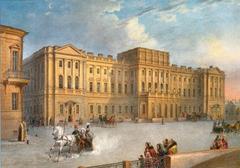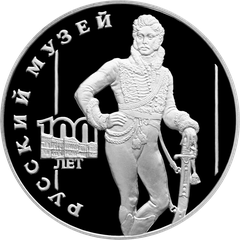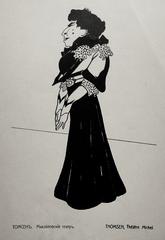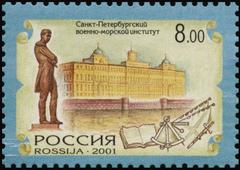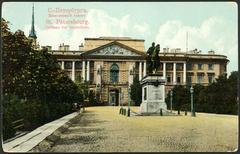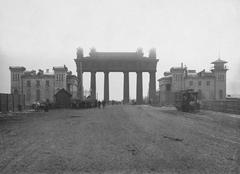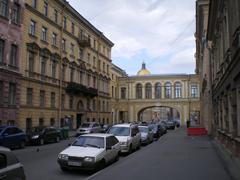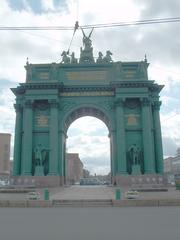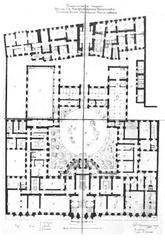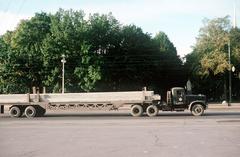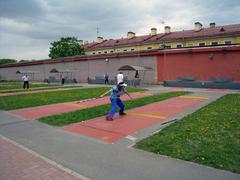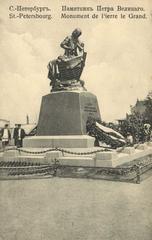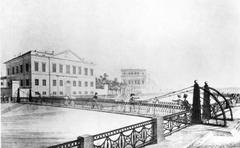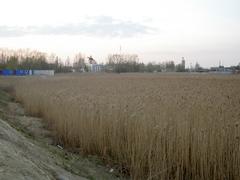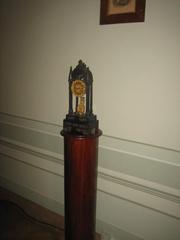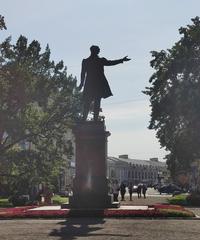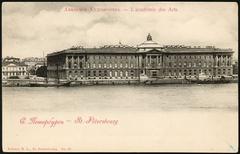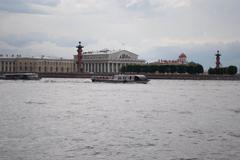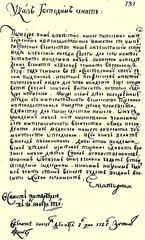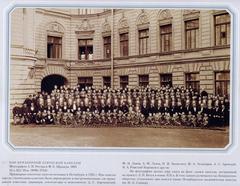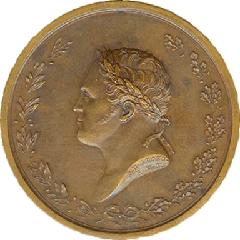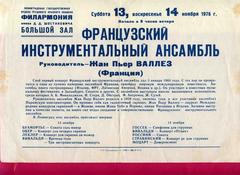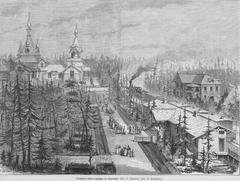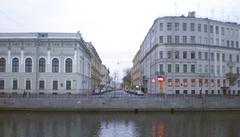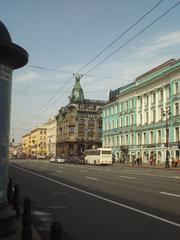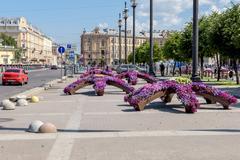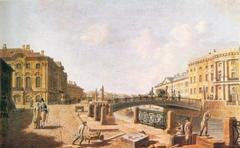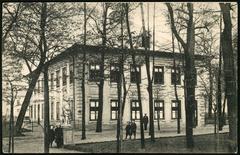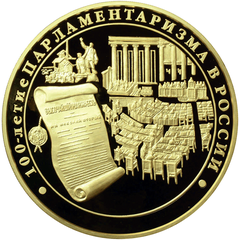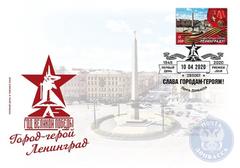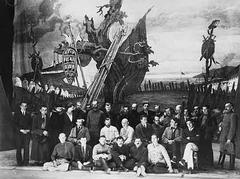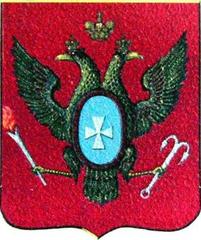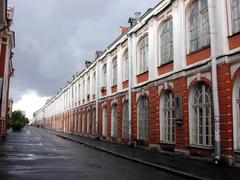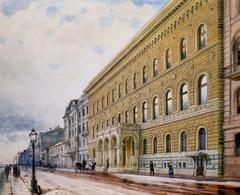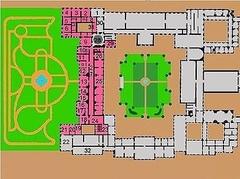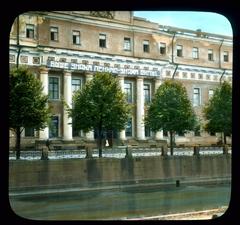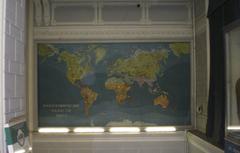Rubakin Street: Visiting Hours, Tickets, and Historical Sites in Saint Petersburg
Date: 04/07/2025
Introduction to Rubakin Street and Its Significance
Located in the vibrant city of Saint Petersburg, Russia, Rubakin Street offers a compelling blend of historical depth, cultural richness, and urban vitality. Named after the prominent Russian bibliographer and literacy advocate Nikolai Alexandrovich Rubakin (1862–1946), the street is emblematic of the city’s intellectual heritage and community spirit. In contrast to Saint Petersburg’s more famous boulevards like Nevsky Prospekt, Rubakin Street provides an authentic window into everyday life, uniting late imperial charm, Soviet-era architecture, and modern development in one dynamic urban tapestry (Russian History Museum; World History Journal).
Rubakin Street remains open to the public 24/7 with no entrance fee, making it an accessible and welcoming destination year-round. The area regularly hosts cultural events, literary gatherings, and community activities, upholding Saint Petersburg’s reputation as Russia’s literary capital (Wikipedia). With convenient access by metro and bus, a harmonious mix of historic and modern architecture, and a vibrant local scene, Rubakin Street is ideal for travelers eager to experience Saint Petersburg beyond the usual tourist routes (The Invisible Tourist; Travel Setu).
Its proximity to landmarks such as the Church of the Savior on Spilled Blood—one of the city’s most impressive monuments—further enhances Rubakin Street’s appeal (Official Church Website). This guide offers practical insights into Rubakin Street’s history, visiting hours, accessibility, attractions, and travel tips for a rewarding visit.
Table of Contents
- Introduction
- Origins and Naming
- Historical and Urban Development
- Visiting Hours, Tickets, and Accessibility
- Getting There
- Notable Features and Attractions
- Best Time to Visit and Events
- Photography Highlights
- Rubakin Street and Saint Petersburg’s Urban Identity
- Historical and Cultural Context
- Literary and Intellectual Heritage
- Architectural Significance
- Community Life and Events
- Local Customs
- Artistic and Cinematic Connections
- Practical Visitor Tips
- Accessibility Considerations
- Exploring Rubakin Street: History & Attractions
- Architectural Features
- Urban Landscape
- Cultural and Social Significance
- Navigating Rubakin Street
- Special Attractions and Photo Spots
- Resources and Links
- FAQ
- Visiting the Church of the Savior on Spilled Blood
- Call to Action
Origins and Naming of Rubakin Street
Rubakin Street (улица Рубакина) honors Nikolai Rubakin, a noted Russian bibliographer and champion of public education. The street’s name is a testament to Saint Petersburg’s tradition of commemorating intellectual figures, reflecting the city’s enduring reverence for literature and learning.
Historical and Urban Development
Developed in the late 20th and early 21st centuries to meet post-Soviet housing needs, Rubakin Street exemplifies Saint Petersburg’s evolution from historic grandeur to modern urbanism. The area features a blend of functionalist residential buildings, green spaces, and integrated amenities, illustrating the city’s adaptation to contemporary life while retaining links to its storied past.
Visiting Hours, Tickets, and Accessibility
- Street Access: Open 24/7; no ticket required.
- Facilities: Libraries and cultural centers generally operate from 9:00 AM to 8:00 PM—confirm specific hours in advance.
- Accessibility: Wide sidewalks, ramps, and pedestrian crossings support easy access for visitors with disabilities.
Getting to Rubakin Street
- Metro: The nearest stations are well-connected—check city maps for the latest routes.
- Bus: Several city bus lines serve Rubakin Street; local transit apps provide real-time schedules.
- By Car: Limited parking is available; public transit is recommended due to congestion.
Notable Features and Attractions
- Cultural Centers & Libraries: Host exhibitions, readings, and community events.
- Green Spaces: Parks and playgrounds for families and relaxation.
- Local Cafés & Shops: Sample Russian pastries, browse independent bookstores, and enjoy authentic local shopping.
Best Time to Visit and Events
Rubakin Street is inviting year-round. Spring and summer offer pleasant weather for walks and outdoor events, while winter brings a cozy atmosphere to its cafés and galleries. The area’s calendar features literary festivals, art exhibitions, and music performances—especially during the city’s famed White Nights Festival (Wikipedia).
Photography Highlights
Capture the interplay of late Soviet-era and modern architecture, landscaped courtyards, and vibrant street life. Golden hour and the city’s “white nights” provide ideal lighting for evocative urban photography.
Rubakin Street in Saint Petersburg’s Urban Identity
Rubakin Street represents the everyday character of Saint Petersburg, away from the main tourist arteries. It encapsulates the city’s dedication to education, culture, and urban renewal, inviting visitors to experience authentic local life.
Historical and Cultural Context
Though less internationally known than Nevsky Prospekt, Rubakin Street is a microcosm of Saint Petersburg’s cultural identity. Named for a literary giant, it continues the tradition of fostering intellectual communities within the city (Russian History Museum).
Literary and Intellectual Heritage
Rubakin Street’s connection to Nikolai Rubakin is evident in its bookshops, literary cafés, and cultural venues. These spaces often host readings and discussions, maintaining the city’s reputation as a haven for writers, thinkers, and artists (Wikipedia).
Architectural Significance
The street features a harmonious mix of architectural styles:
- Historic: Stucco facades, ornate ironwork, and communal courtyards from the late 19th and early 20th centuries (World History Journal).
- Modern: High-rise towers and contemporary developments complement the traditional low-rise structures, reflecting ongoing urban transformation.
Community Life and Events
Rubakin Street plays an active role in Saint Petersburg’s cultural scene, hosting:
- Literary festivals
- Art exhibitions
- Music performances
These events foster a welcoming community and creative spirit, especially during the annual White Nights Festival (Wikipedia).
Everyday Life and Local Customs
The street’s bakeries, shops, and cafés reflect local traditions. Politeness and understated interaction are valued, and learning a few Russian phrases is appreciated. The neighborhood’s relaxed atmosphere is ideal for visitors seeking an authentic experience (The Invisible Tourist).
Artistic and Cinematic Connections
Rubakin Street’s unique atmosphere, especially during the luminous white nights, has inspired filmmakers, photographers, and artists, serving as a backdrop for creative projects (Wikipedia).
Practical Visitor Tips
- Getting There: Accessible by metro and bus (The Invisible Tourist).
- Best Seasons: Late spring to early autumn is ideal.
- Guided Tours: Some local tours cover Rubakin Street and adjacent historical sites (Travel Setu).
- Photography: Early morning or evening enhances the street’s features.
Accessibility Considerations
Rubakin Street features wide, well-maintained sidewalks and ramps; however, some older buildings may lack full accessibility. It is best to check directly with venues about specific accommodations.
Exploring Rubakin Street: History & Attractions
Architectural Features
Traditional Influences:
Elegant neoclassical and baroque facades, pilasters, and iron balconies evoke the city’s imperial past.
Modern Interventions:
Contemporary high-rises punctuate the skyline, providing a striking contrast and panoramic city views.
Urban Landscape
Tree-lined sidewalks, landscaped courtyards, and modest public spaces foster a friendly, walkable environment.
Cultural and Social Significance
Local businesses—cafés, bakeries, and shops—contribute to the area’s vibrancy. Seasonal events and outdoor markets are held throughout the year.
Navigating Rubakin Street
- Getting Around: Metro, bus, tram, and ride-sharing services like Yandex Go provide easy access.
- Accommodation: Options range from hostels to hotels and rental apartments, many near public transport.
- Safety: The area is safe but exercise standard urban caution, especially at night.
Special Attractions and Photographic Spots
Photographers will appreciate the contrast between historic architecture and modern towers, as well as the lush public squares and courtyards.
Additional Resources and Links
Frequently Asked Questions (FAQ)
Q: Is there an entrance fee to visit Rubakin Street?
A: No, access is free.
Q: Are there guided tours?
A: Some city walking tours include Rubakin Street.
Q: Is the area accessible for visitors with disabilities?
A: The street is generally accessible, but check with venues for specifics.
Q: What are the best visiting hours?
A: Daytime hours between 9 AM and 7 PM are ideal.
Visiting the Church of the Savior on Spilled Blood: History, Tips, and Local Life Nearby
One of Saint Petersburg’s most iconic landmarks, the Church of the Savior on Spilled Blood, is a must-see for visitors. Renowned for its vibrant mosaics and ornate architecture, the church stands on the site where Tsar Alexander II was assassinated and embodies Russian Revival style (Official Church Website).
Visiting Info
- Hours: 10:30 AM–6:00 PM daily; closed Wednesdays.
- Tickets: Around 450 RUB for adults; discounts available. Guided tours in English can be booked online or at the entrance.
Getting There
The church is a 10-minute walk from the Nevsky Prospekt metro station and is accessible by multiple bus routes.
Accessibility Tips
Due to the historic structure and staircases, accessibility is limited. Wear comfortable shoes and prepare for uneven flooring. Photography without flash is permitted.
Local Life and Rubakin Street
A stroll from the church brings you to Rubakin Street, where you’ll find Soviet-era and modern apartment buildings, cozy cafés, local markets, and green spaces. Community centers host workshops in folk arts and crafts.
Recommended Photo Spots
- Church domes against the sky
- Mosaics inside the nave
- Griboyedov Canal at sunset
- Rubakin Street courtyards and daily scenes
Media and Visuals
Virtual tours and high-quality images are available on the church’s official website.
FAQ
Q: Is there a dress code?
A: Modest clothing required; no hats inside.
Q: Are tickets available online?
A: Yes, via the official website.
Q: Are guided tours offered in English?
A: Yes—advance booking is recommended.
Call to Action
Ready to discover Rubakin Street and Saint Petersburg’s hidden gems? Download the Audiala app for guided tours, event updates, and insider tips. Follow us on social media for inspiration and share your Saint Petersburg stories with #ExploreStPetersburg.
Summary and Visitor Recommendations
Rubakin Street offers a vibrant snapshot of Saint Petersburg’s historical evolution and cultural life. Rooted in a tradition of intellectual pursuit and community, the street is accessible, lively, and full of authentic experiences. Its proximity to the Church of the Savior on Spilled Blood adds to its appeal, making it a rewarding stop for those seeking both grand monuments and local flavor (Russian History Museum; World History Journal; Official Church Website; The Invisible Tourist). Plan your visit, check for seasonal events, and explore the dynamic spirit of this unique Saint Petersburg neighborhood.
References and Further Reading
- Russian History Museum: Historic Landmarks Saint Petersburg
- World History Journal: St Petersburg Architecture
- Wikipedia: Society and Culture in Saint Petersburg
- The Invisible Tourist: Dos and Don’ts in Russia Travel Tips
- Travel Setu: Saint Petersburg Tourism Historical Places
- Official Church Website: Church of the Savior on Spilled Blood
- Audiala App: Guided Tours and Travel Updates
